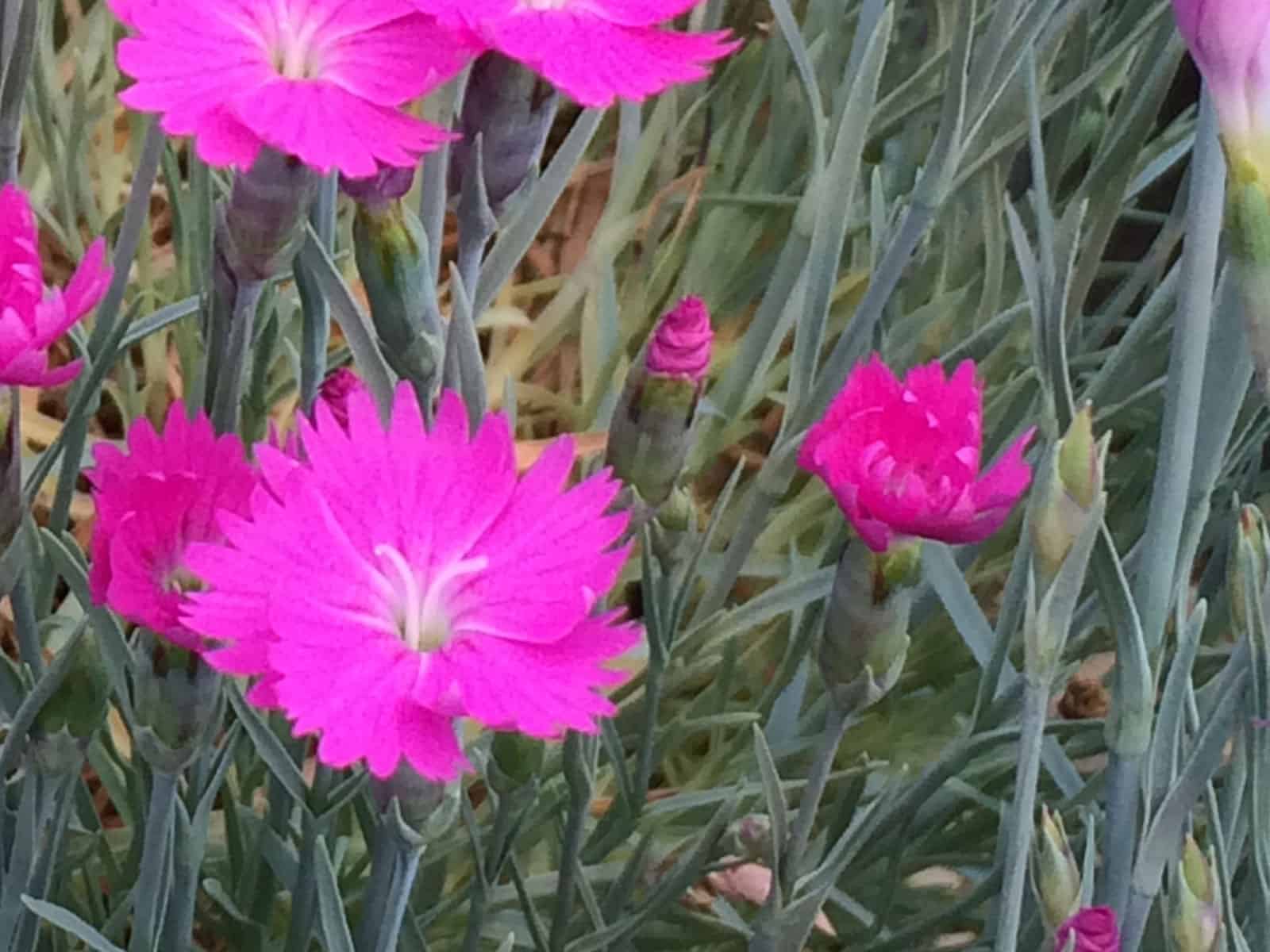Culture: Easily grown in average, medium, well-drained soil in full sun. Prefers slightly alkaline soils. This hybrid tolerates heat and humidity (as well as some drought) better than most species of dianthus. Remove spent flowers to promote continued bloom. Avoid planting in areas with poor drainage where crowns will remain wet in winter.
Noteworthy Characteristics: Dianthus is a genus of over 300 species from Europe and north Asia to Japan. One species is native to North America. Most are evergreen and can be low-growing subshrubs, annuals, biennials or perennials. They are grown for their attractive, often fragrant, flowers. Many hybrids, often of complex parentage, have been made resulting in tens of thousands of cultivars.
Genus name comes from the Greek words dios meaning divine and anthos meaning flower.
The common name of pink for plants in the genus Dianthus is in probable reference to the fringed flower petal margins (they appear to have been cut with pinking shears) and not to flower color.
'Feurerhexe', commonly sold under the trade name of FIREWITCH, is a mat-forming cheddar pink that produces numerous, scented, bright magenta flowers singly atop wiry stems (to 6" tall) arising from tufted mounds of grassy, deep blue, linear foliage. Blooms in spring with some intermittent repeat bloom in summer.
Problems: No serious insect or disease problems. Crown rot may occur in wet, poorly-drained conditions.
Garden Uses: Provides masses of color and good contrast for the rock garden or small border front. Good edging plant. Dense mats may be grown together to form an interesting ground cover. May also be grown on difficult sites such as stone walls.


